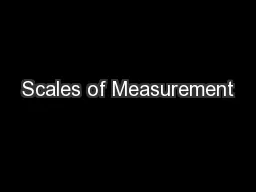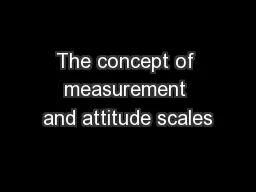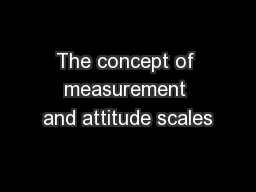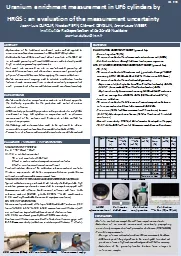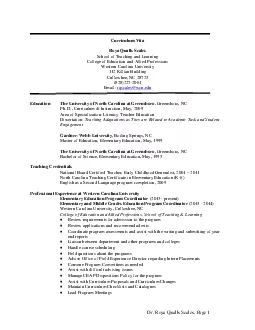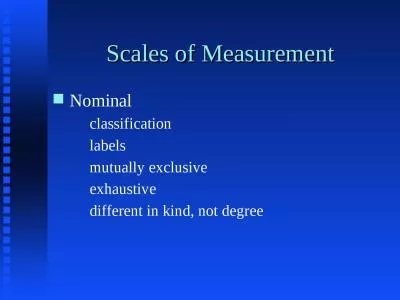PPT-Scales of Measurement
Author : danika-pritchard | Published Date : 2016-07-08
Nominal classification labels mutually exclusive exhaustive different in kind not degree Scales of Measurement Ordinal rank ordering numbers reflect greater than
Presentation Embed Code
Download Presentation
Download Presentation The PPT/PDF document "Scales of Measurement" is the property of its rightful owner. Permission is granted to download and print the materials on this website for personal, non-commercial use only, and to display it on your personal computer provided you do not modify the materials and that you retain all copyright notices contained in the materials. By downloading content from our website, you accept the terms of this agreement.
Scales of Measurement: Transcript
Download Rules Of Document
"Scales of Measurement"The content belongs to its owner. You may download and print it for personal use, without modification, and keep all copyright notices. By downloading, you agree to these terms.
Related Documents

